What to read about neural networks
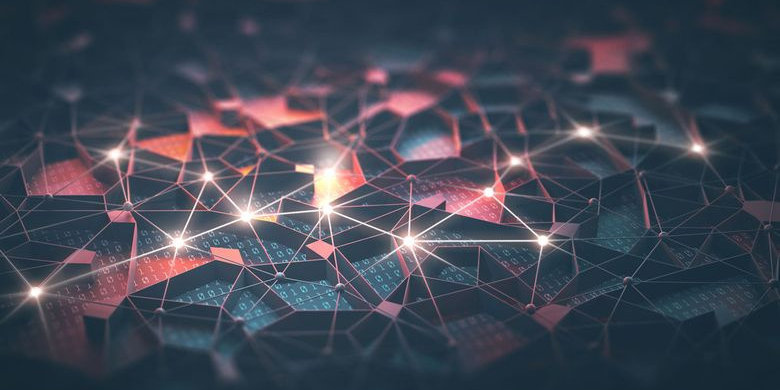
Neural networks are experiencing a second renaissance. At first, it seemed that the community, having solved several applied problems, would quickly switch to another fashionable topic. Now it is obvious that the decline in interest in neural networks in the near future is not expected. Researchers are finding new ways to apply technology, and then there are startups that use neural networks in the product.
Should neural networks not be studied by machine learning experts? Everyone will answer this question for himself. We will look at the situation from the other side - what do developers (and everyone else) who want to know more about pattern recognition methods, discriminant analysis, clustering methods and other interesting things, but do not want to spend extra resources on this task.
To set an ambitious goal, to rush headlong into online courses, is to spend a lot of time studying the subject, which you probably need only for general development. There is one proven (retrograde) method that takes half an hour a day. The book is an offline source of information. The book can not boast of relevance, but for a limited period of time will give you a fundamental understanding of the technology and ways of its possible implementation for your needs.
Neural Network Design

If you already have a basic knowledge of machine learning, and you want to move on, the authors of the Neural Network Toolbox for MATLAB will offer you a clear and detailed immersion into the fundamentals of neural network architecture and teaching methods. Training methods are provided for both direct propagation neural networks (including multilayer and radial networks) and recurrent networks . In addition to the book, you can get illustrations and code for examples ( website ).
Deep Learning (Adaptive Computation and Machine Learning series)
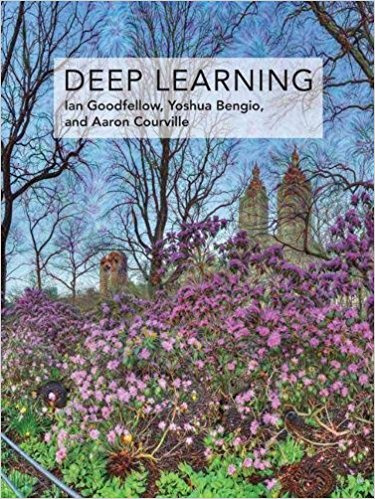
The sacred book of convolutional neural networks and deep learning - no joke, this is really a very important book, which is recommended by many successful developers ... and not only they. “Written by three experts, Deep Learning is the only comprehensive book in this area,” said Ilon Musk, and if you believe in the reliability of the Tesla autopilot and the prospects of the OpenAI project, then you can believe it. :)
The book offers mathematical tools and fundamentals covering linear algebra, probability theory and information theory, numerical methods, and machine learning directly. Deep Learning describes deep learning methods used by industry practitioners, including deep forward propagation networks, optimization algorithms, convolutional networks, Monte Carlo methods, network model building, etc. In addition, you will learn many interesting things about natural language processing, speech recognition, computer vision, recommendation systems, bioinformatics, and even games. It is easier to say what is not in this book ... although it is also difficult - if you don’t find something on 800 pages, there is also a website for the book with additional materials.
PS The electronic version of the book is laid out in open access .
Neural Networks: A Systematic Introduction
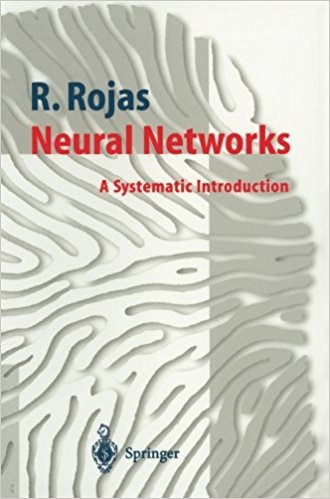
Classics of the genre, the fundamental work of 1996 from the era to deep learning. If you want to not only get acquainted with the subject of machine learning, but also to become an expert in this field, you should get acquainted with this view of the problematic. The book is less (compared to others in this collection) of pure mathematics; instead, an attempt is made to give the reader an intuitive understanding of the concept of neural networks. This is done at the expense of the depth of the approach - there are no attempts at once to write your network; The author first proposes to study theoretical laws and models on the example of biology. Let's not forget that each person has his own neural network. Simple examples show how model properties change when common computational elements and network topologies are introduced.
Pattern Recognition and Machine Learning (Information Science and Statistics)

If you like the previous book from the compilation, you can enhance the knowledge of the conceptual edition of 2006. "Pattern Recognition and Machine Learning" became the first textbook on pattern recognition, representing the Bayesian method (although the Bayes formula itself was already published in 1763). The book presents output algorithms that allow you to quickly find answers in situations where accurate answers are impossible. Author Christopher Bishop, director of the Microsoft Research Cambridge laboratory, was the first to explain graphic models to describe probability distributions.
PS In 2013, the Microsoft Research division released a separate book Deep Learning in open access.
Programming Collective Intelligence
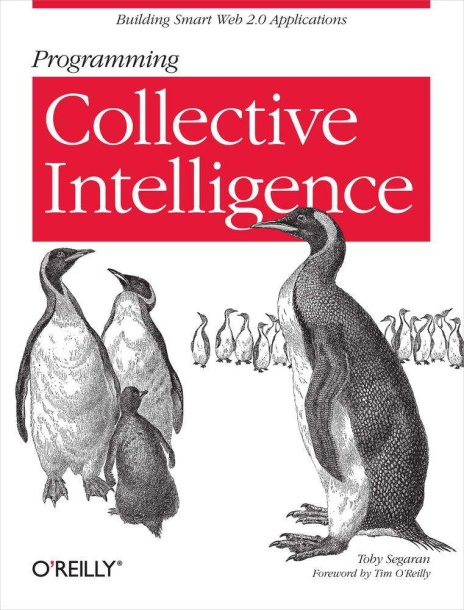
One of the best books on the basics of machine learning (in conjunction with Python), written a few years before neural networks gained cult status. But age is not a hindrance to it - the methods of collaborative filtering, Bayesian filtering, the method of support vectors remain relevant. It affects the principles of the search engines (search engines, indexes, query mechanisms and PageRank algorithm), optimization algorithms, non-negative matrix factorization and other topics.
Make Your Own Neural Network
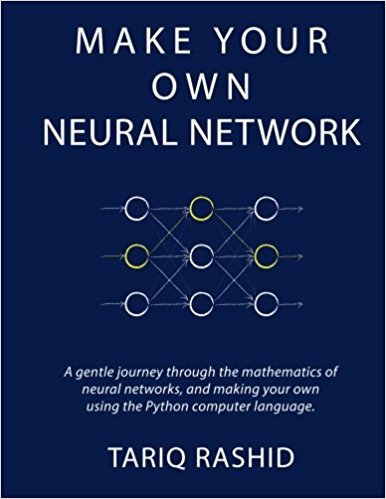
A walkthrough of math neural networks to creating your own nets using Python. A big plus of the book - low requirements for the amount of knowledge of the reader. In the field of mathematics, only school knowledge will be required (without deep immersion). The authors set a goal to give an idea of neural networks to the widest range of readers. It is commendable, considering how many books have been written for advanced specialists.
After reading, you can do the main thing: write code in Python, create your own neural networks, teach them to recognize various images, and even create solutions based on Raspberry Pi. There is also math in the book, but it will not make you scream in horror (which is possible if the area of your activity is far from algorithms) - the mathematical ideas underlying neural networks are given with a large number of illustrations and examples.
PS If you are interested, but you can not study by the book, we recommend the blog of the same name with a large number of useful articles.
Python machine learning

Machine Learning in Python is a collection of useful tips for beginning machine learning experts. Why python? So the author wanted, he just likes the language. Sebastian Raschka explains the most general concepts, supplements them with the necessary mathematical apparatus for understanding the topic at the intrasystem level, gives examples and explains the methods of implementation. There is also a GitHub repository with general information and sample code. It is planned to translate the book into Russian.
Learning From Data
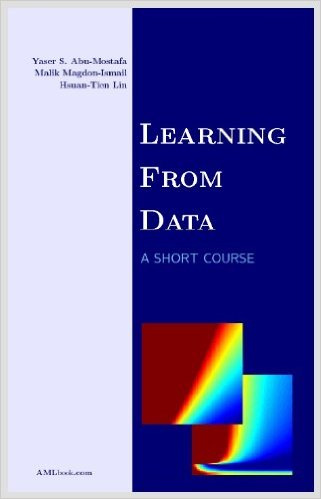
This book will briefly introduce you to the world of machine learning. In addition, readers are provided with free access to online chapters, which are constantly updated in line with trends in machine learning. This book is recommended for those who have just started to get acquainted with the subject and do not understand what it means to say “learning on a dataset”.
The authors observe a balance between the theoretical and practical parts of machine learning. This book is used as a textbook at the California Institute of Technology, Rensselaer Polytechnic Institute (USA) and the National University of Taiwan. The authors also actively consult with financial and commercial companies on applications that use machine learning.
Artificial Intelligence: A Modern Approach
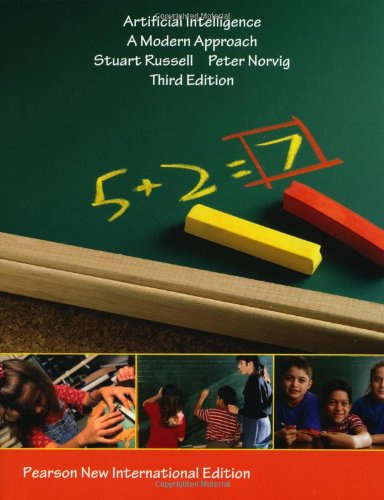
A popular book from famous authors Stuart Russell and Peter Norvig , which has already gone through the third edition. A complete, modern introduction to the theory and practice of artificial intelligence, intended for students of the first courses of the university. The book is used as an introduction to the topic on a huge number of courses on Data science and AI. If you are interested in using neural networks to create artificial intelligence, you can start your way in this fascinating and very complex area.
Artificial Intelligence: A Modern Approach is publicly available .
Neural Networks and Deep Learning
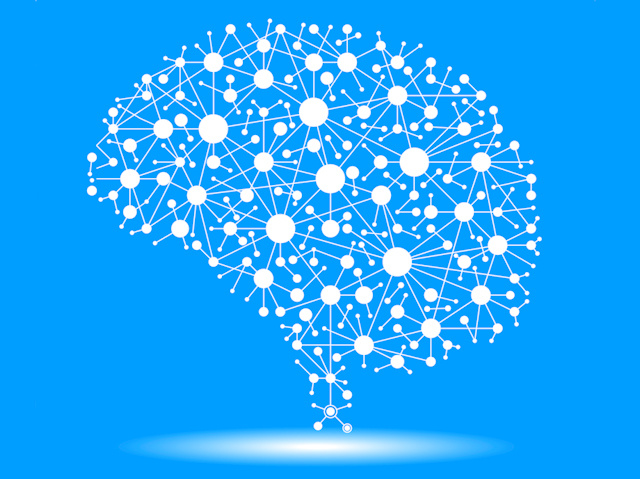
This “book” is not really a book - it doesn’t even have a cover. But before you really a full-fledged edition, laid out in open access (by reference above). Michael Nielsen gives a great introduction to neural networks in a series of step-by-step examples on handwriting recognition. The book is well suited for those who already have machine learning experience, and want to delve deeper into the neural networks.
Conclusion
Now even programmers who know almost nothing about deep machine learning technology can use simple and effective tools to create self-learning programs.
As for the books on neural networks in Russian, the reviews about them are contradictory. "Neural networks. The full course of Simon Khaykin is characterized by an increased complexity and ambiguous translation (but if you are not afraid, you can read). We did not succeed in finding a book that would be at the same level of quality as other publications in the compilation. If you can recommend something, write in the comments.
')
Source: https://habr.com/ru/post/333862/
All Articles